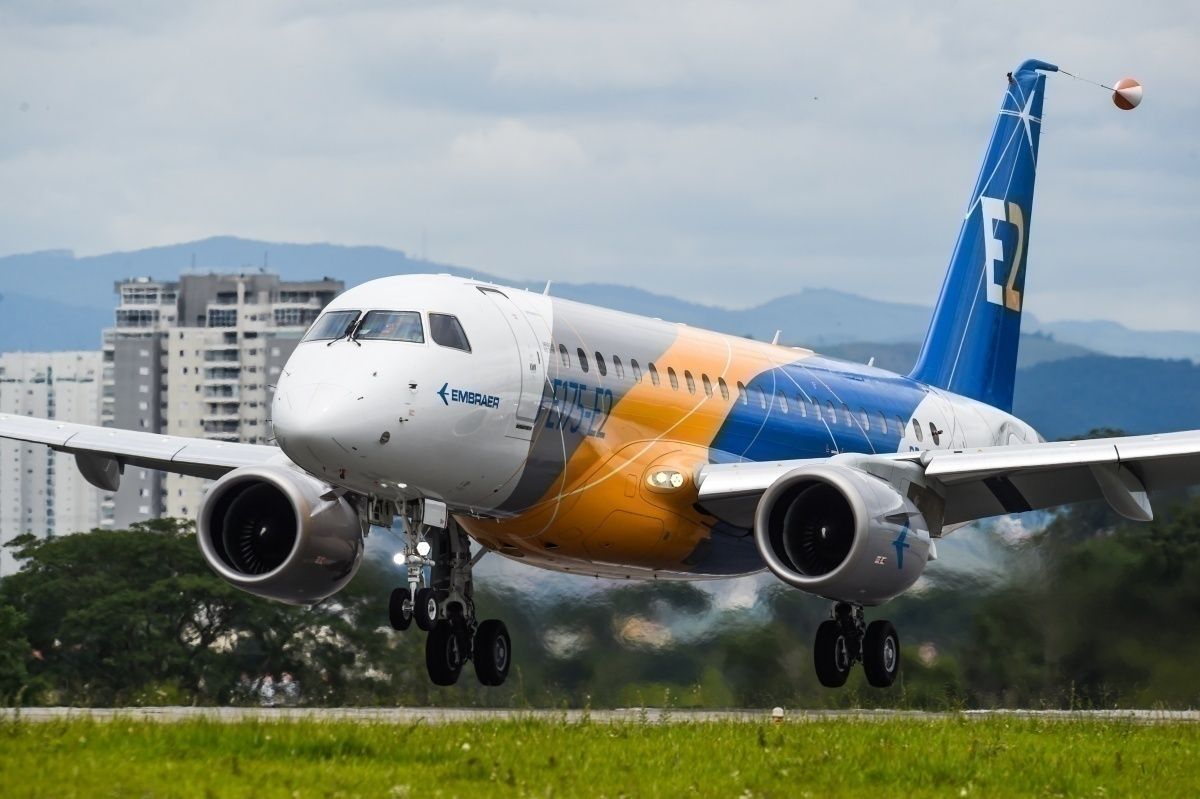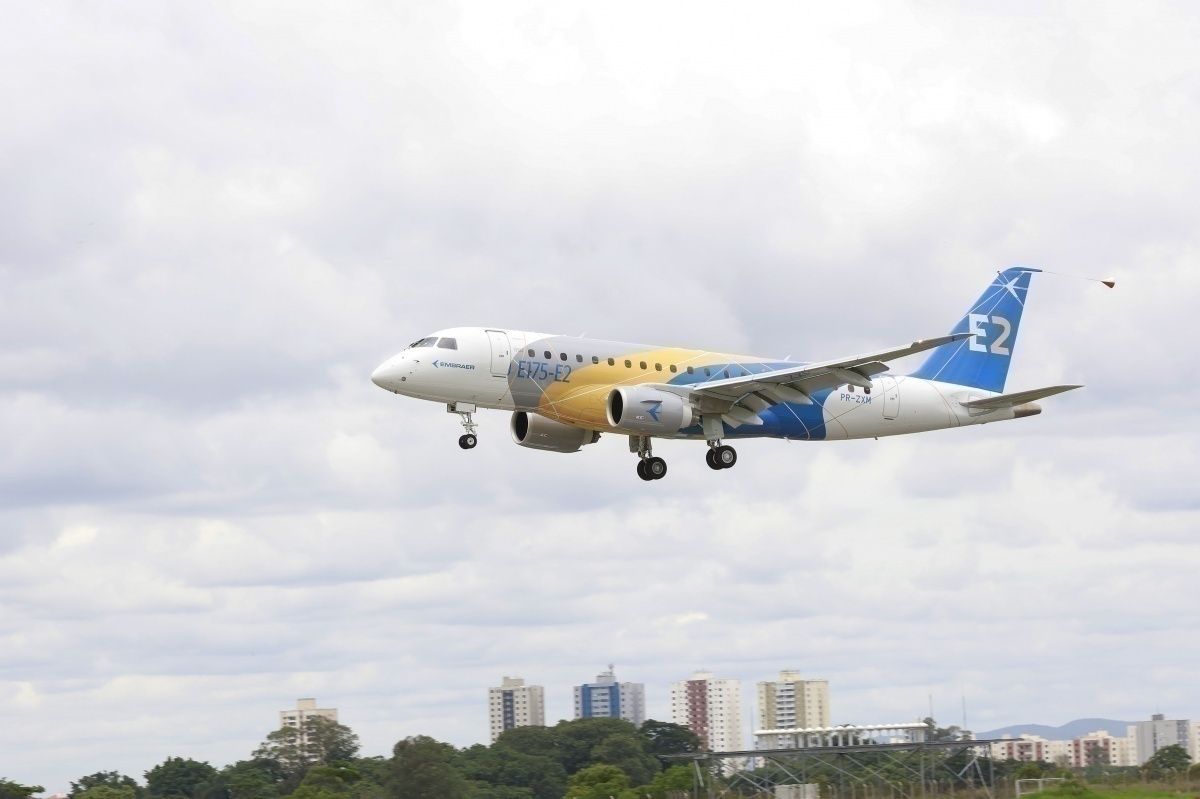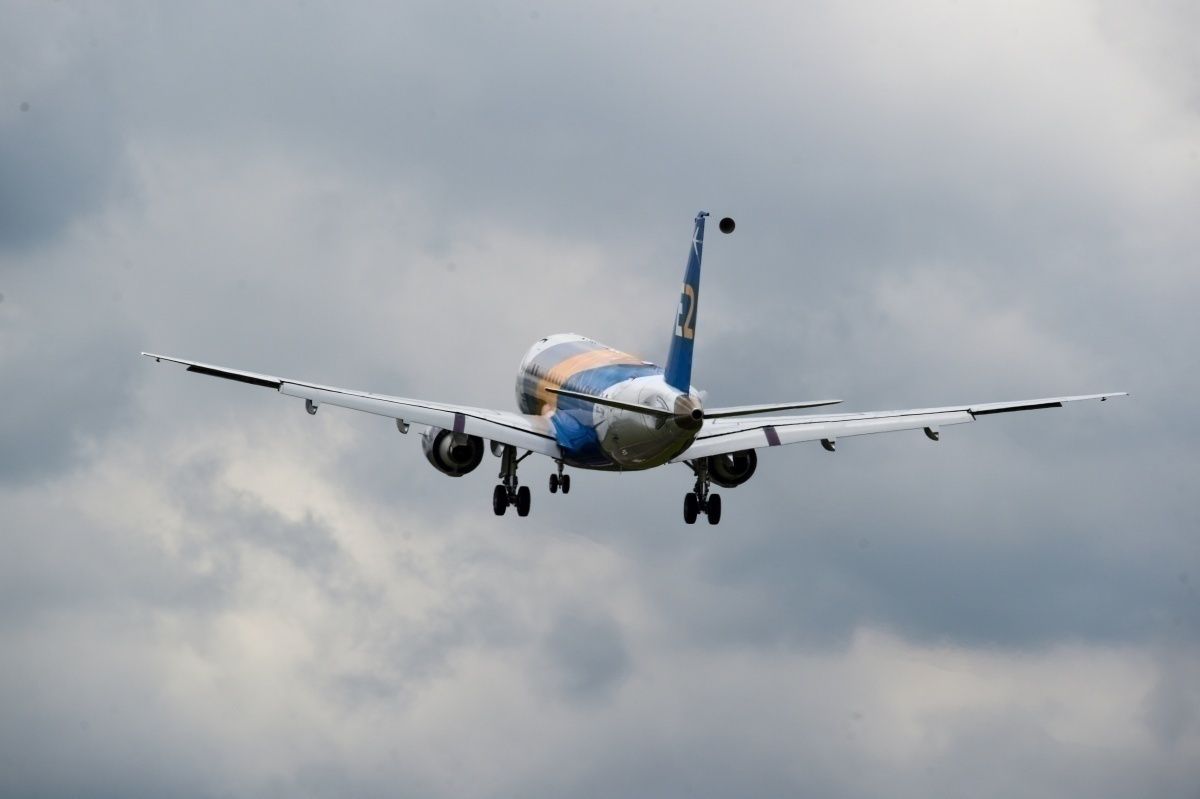In its second quarter results, Brazilian commercial aviation planemaker Embraer has confirmed that it is delaying further development of the E-175-E2 until 2023. As a result of the global COVID-19 pandemic and a considerable downturn in the number of people flying, Embraer, just like Boeing and Airbus, is expecting a weak demand for new aircraft.
Despite the delay in introducing the E175-E2 to the marketplace, Embraer says it will continue to develop the regional jet but on a revised timeline. In its statement, Embraer said that it believed the E175-E2 would have an important role to play once the demand for new aircraft picks up. Until then, the São José dos Campos-based plane maker will continue to offer for sale its award-winning E-175 to new and existing customers.
Embraer expects strong demand for regional jets
Despite the deadly coronavirus and its effect on the aviation industry, Embraer has not had any airlines cancel their orders. Therefore, it remains confident that it will see strong demand for regional jets as the market recovers.
While speaking about how the coronavirus has impacted Embraer with aviation website FlightGlobal, Embraer commercial CEO and president, Arjan Meijer, said,
"While our industry has survived many huge shocks, and often emerged stronger, the impact of COVID-19 has been deeper, broader, and more damaging."
Meijer believes that the company's lineup of E-Jets will be vital in helping airlines rebuild once we recover from the harmful effects of the devastating virus.
"Smaller capacity airplanes have often led recovery efforts, helping airlines to manage their cash flow better, and restore network connectivity," Meijer says.
Business budgets are tight
Looking at how the coronavirus has changed the way we live, many companies realize that video conferencing can replace business trips and save them money. Also, with travel restrictions in place and shrinking budgets brought on by the coronavirus, airlines expect business travel to be the last sector to recover.
They hope that people who have been stuck in lockdown will book short-haul flights and spend their vacation closer to home. This is especially true for people in the United States for whom international travel is restrictive right now.
What is different about the E175-E2?
Created to save airlines money, the E-2 variant of the E175 is slightly larger with an additional row of seats, allowing airlines to choose seating configurations. Operating in a single economy class configuration, the E175-E2 can seat 90 passengers while configured in two classes it can accommodate 80 passengers.
The significant advantage of the E175-E2 is that it is 16% more fuel-efficient and can fly for more extended periods between maintenance. The E175-E2 will offer airlines longer flying time between checks with 10,000 flight hours in the single-aisle jet category. Embraer says this will lead to an additional 15 days of flying over ten years compared to other E-Jets.
Originally the E175-E2 was supposed to enter service in 2021 after completing its maiden flight last December but will now be delayed until 2023 and beyond.
It seems a shame that Embraer is delaying the introduction of the E175-E2 but it might give them time to see if they can get unions to allow lower-paid regional jet pilots to fly them. It's all about the number of seats and weight of the aircraft that is a thorny issue with US carriers. Anyway, that's a story for another day.
What do you think about Embraer delaying the E175-E2? Please let us know your thoughts in the comments.



